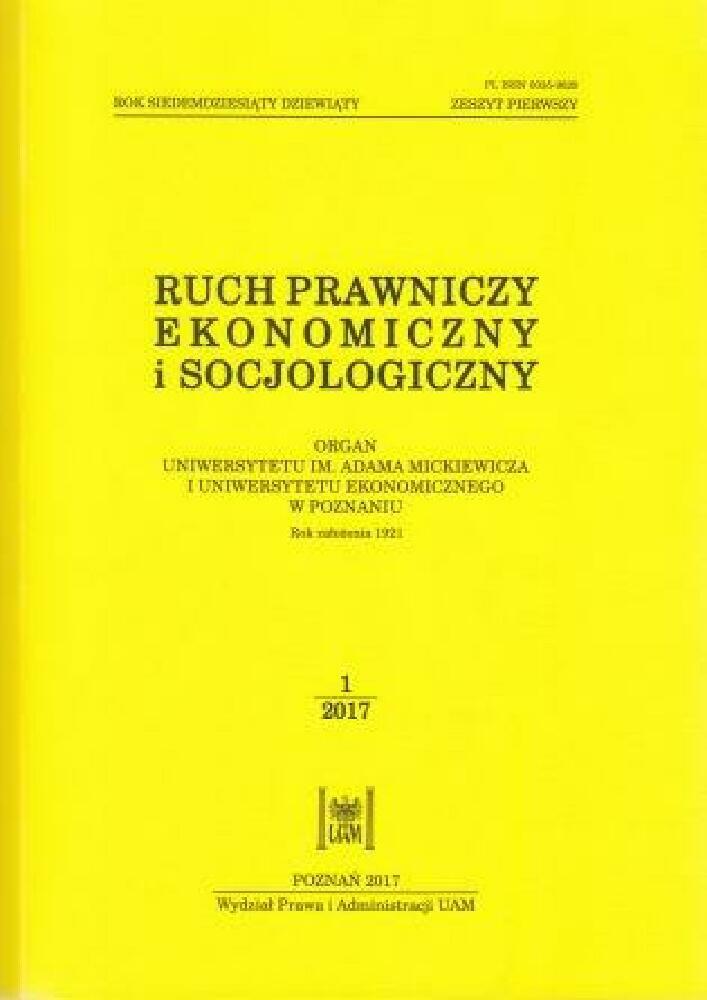Abstract
In the paper we analyse structural changes in commodity markets, their financialisation and consequently growing automation. The main factors which foster the development of algorithmic trading are explained and the common methods and strategies used in trading processes and required investments in technology reviewed.References
Bailey B. (2008), High-Performance Trading Infrastructure: Cost, Opportunities and Challenges, http://aitegroup.com/report/high-performance-trading-infrastructure-cost-opportunities-and-challenges [dostęp: 30.11.2016].
Basel III (2010): A global regulatory framework for more resilient banks and banking systems.
Borovkova S., Lammiman, A. (2010), The impact of news sentiment on energy futures returns, Vrije Universiteit Amsterdam: 1-10.
Boston Consulting Group (2016), Hyperliquidity: A Gathering Storm for Commodity Traders, The Boston Consulting Group.
Buchanan, M. (2015), Physics in finance: trading at the speed of light, http://www.nature.com/news/physics-in-finance-trading-at-the-speed-of-light-1.16872 [dostęp: 28.11.2016].
Carmona R. (2015), Financialization of the commodities markets: a non-technical introduction, Commodities, Energy and Environmental Finance 74, Springer New York, str. 3–37.
CISCO (2007), Design Best Practices for Latency Optimization: 1.
CME (2012), Manual/Automated Trading Indicator (FIX Tag 1028) http://www.cmegroup.com/rulebook/files/cme-group-ra1210-5.pdf [dostęp: 27.12.2016].
Dodd-Frank Act (2010), Dodd-Frank Wall Street reform and Consumer Protection Act.
EMIR (2012), Regulation (EU) No 648/2012 on OTC derivatives, central counterparties and trade repositories (EMIR).
Financial Times (2016), https://www.ft.com/content/9df7ccec-dcc4-11e5-827d-4dfbe0213e07, 28.11.2016.
Graham, B., Dodd, D. (1932) Security Analysis, Whittlesey House, McGraw-Hill Book Co.
Haynes, R., Roberts, J. (2015), Automated Trading in Futures Markets, CFTC: 1–18.
Heumesser, C., Staritz, C. (2013), Financialisation and the microstructure of commodity markets – a qualitative investigation of trading strategies of financial investors and commercial traders, Working Papers 44 ÖFSE: 1–61.
Hudak, M. (2015), High Frequency Trading, International Markets, and Regulation, Carnegie Mellon University: 1–42.
Kissell, R. (2014), The Science of Algorithmic Trading and Portfolio Management, Elsevier: 17–19.
Lim, C. (2013), High frequency trading of Brent crude price, International Journal of Management Sciences and Business Research 2(8): 14–18.
Mayer, J. (2009), The growing interdependence between financial and commodity markets, UNCTAD Discussion Papers 196: 1–35.
MIFID II (2014), Directive 2004/39/EC and the Regulation on Markets in Financial Instruments.
Ray, A. (2014), http://wealthandcapitalmarketsblog.celent.com/2014/05/30/big-banks-exodus-from-commodities/ [dostęp: 15.11.2016].
REMIT (2011), Rozporządzenie Parlamentu Europejskiego i Rady (UE) Nr 1227/2011 z dnia 25 października 2011 r. w sprawie integralności i przejrzystości hurtowego rynku energii (REMIT).
SEC (2014), Equity Market Structure Literature Review, Part II: High Frequency Trading, SEC.
Simon, M. (2014), Algos in Futures Markets: Shifting into High Gear, The TABB Group.
Staritz, C., Tröster, B., Küblböck, K. (2015) Commodity prices, financial markets and development, 9/2013 ÖFSE: 1–12.
Scholtu, M., Dijk, D. Frijns, B. (2014), Speed, Algorithmic Trading, and Market Quality around Macroeconomic News Announcements, Journal of Banking & Finance 38: 89–105.
Szyszka, A. (2009), Finanse behawioralne. Nowe podejście do inwestowania na rynku kapitałowym, Wydawnictwo Uniwersytetu Ekonomicznego, Poznań.
License
Copyright (c) 2017 WPiA UAM

This work is licensed under a Creative Commons Attribution-NonCommercial-NoDerivatives 4.0 International License.




